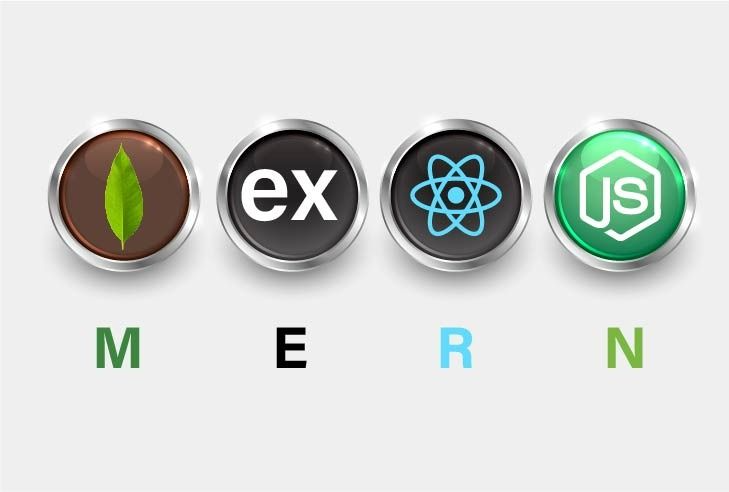
INTRODUCTION:
The MERN stack is a renowned plan of developments for building dynamic web applications. The contraction “MERN” addresses MongoDB, Express.js, Answer, and Node.js — four advances that participate to areas of strength for make, stack web applications. All of these advances expects a basic part in the improvement cycle, giving both front-end and back-end functionalities. In this article, we’ll examine the pieces of the MERN stack, why it’s so renowned, and how creators use it to collect tip top execution web applications.
What is MERN Stack?
The MERN stack is a mix of four innovations:
- MongoDB: A NoSQL data set utilized for putting away information in an adaptable, versatile organization.
- Express.js: A web application system for Node.js, utilized for building the server-side thinking of the application.
- React: A JavaScript library created by Facebook for building UIs, particularly single-page applications.
- Node.js: A runtime climate that awards JavaScript to be run on the server side, empowering full-stack JavaScript improvement.
Together, these developments offer an intensive response for building both the front-end and back-finish of web applications.
Why Use the MERN Stack?
There are a few justifications for why the MERN stack has acquired monstrous fame among designers:
a. Full-Stack JavaScript Development
MERN stack engages originators to create both the front-end and back-finish of the application in JavaScript. This streamlines the improvement cycle and diminishes the need to acquire capability with various programming lingos. With JavaScript on the two sides, designers can zero in on tackling business issues as opposed to learning new linguistic structure.
b. High Performance and Scalability
Every part of the MERN stack is intended to be lightweight, adaptable, and versatile. For example, MongoDB can deal with enormous datasets and offers flat versatility, while Node.js gives quick handling velocity to server-side activities. Respond guarantees that the UI is exceptionally responsive and gives smooth collaborations.
c. Easy Integration
Since every one of the parts in the MERN stack depend on JavaScript, they coordinate consistently with one another. The correspondence between the front-end and back-end is streamlined on the grounds that a similar language is utilized all through the application. This dispenses with the requirement for complex APIs or connectors.
d. Active Community Support
The MERN stack is supported by huge and dynamic networks for every one of its innovations. Engineers can track down an abundance of instructional exercises, guides, modules, and outsider libraries to accelerate the improvement cycle. Furthermore, the local area support guarantees that issues are immediately distinguished and tended to.
Components of the MERN Stack
How about we jump into the points of interest of every one of the four innovations that make up the MERN stack:
MongoDB
MongoDB is a NoSQL data set that stores information in an adaptable, JSON-like organization. It is intended to effectively deal with a lot of information and scale. Dissimilar to conventional social data sets, MongoDB doesn’t need a decent mapping, and that implies designers can store various types of information in a solitary data set. This makes MongoDB ideal for applications with quickly changing information structures, for example, virtual entertainment stages or web based business destinations.
Features of MongoDB:
- Pattern less data set structure
- Level adaptability through sharding
- High accessibility with copy sets
- Adaptable and strong questioning abilities
Express.js
Express.js is a negligible, unopinionated web system for Node.js. It improves on the most common way of dealing with HTTP demands and steering, making it simple to assemble Tranquil APIs or undeniable web applications. Express likewise oversees middleware, guaranteeing that vital handling is finished prior to sending information to the client.
Features of Express.js:
- Lightweight and moderate structure
- Strong directing framework
- Middleware support for expanded usefulness
- Simple combination with MongoDB and Node.js
React
Respond is a JavaScript library utilized for building UIs, particularly single-page applications (SPAs). It permits engineers to make reusable parts, which helps in keeping a perfect and coordinated codebase. Respond utilizes a virtual DOM to upgrade delivering execution, which is vital to conveying a quick client experience.
Features of React:
- Part based design
- Virtual DOM for effective delivering
- Unidirectional information stream
- Rich environment with libraries like Respond Switch for route and Revival for state the board
Node.js
Node.js is a runtime climate that permits JavaScript to run on the server side. It is based on the V8 JavaScript motor and is known for its non-hindering, occasion driven design, making it ideal for dealing with I/O-weighty errands, for example, perusing from a data set or taking care of HTTP demands.
Features of Node.js:
- Offbeat and non-impeding engineering
- Underlying libraries for different functionalities
- Ideal for building versatile, constant applications
- Cross-stage similarity
How the MERN Stack Works Together
The magnificence of the MERN stack lies in how flawlessly the parts coordinate to frame a total, full-stack web application.
- Frontend (React): Respond handles the UI, giving a dynamic and responsive experience. Parts are delivered as HTML and refreshed through Respond’s virtual DOM for ideal execution.
- Backend (Node.js and Express): Node.js fills in as the server climate, while Express handles the directing, HTTP solicitations, and reactions. Express communicates with the data set to get or alter information as expected by the client.
- Database (MongoDB): MongoDB stores the application’s information in assortments. The information can be recovered or controlled utilizing Mongoose (a MongoDB Item Information Displaying library) from Express courses. The outcomes are then sent back to the front-end for delivering in the program.
Benefits of Using MERN Stack for Web Development
a. Speed of Development
With all innovations in light of JavaScript, engineers can undoubtedly switch between the front-end and back-end without the need to get familiar with another dialect. This speeds up advancement and lessens the time spent on setting exchanging.
b. Scalable and Robust
MERN is worked to deal with high volumes of traffic and information. Node.js’ non-hindering I/O model and MongoDB’s adaptable design guarantee that the application can scale flawlessly to satisfy developing needs.
c. Real-Time Application Support
The MERN stack is great for building constant applications like visit applications, live warnings, and cooperative apparatuses. With Node.js taking care of nonconcurrent tasks and Respond giving unique updates to the UI, continuous elements are handily executed.
d. Rich Ecosystem and Libraries
The huge environment of JavaScript libraries and structures permits MERN engineers to exploit instant answers for normal issues. Libraries like Revival, Socket.io, and Mongoose can be handily coordinated to upgrade usefulness.
Common Use Cases for MERN Stack
MERN stack is great for building an extensive variety of web applications:
- Social Media Platforms: Ongoing cooperations, versatile information stockpiling, and dynamic UIs are fundamental in online entertainment applications, and MERN handles these necessities successfully.
- E-commerce Websites: With its adaptability and adaptability, MERN is perfect for building huge scope web based business stages where information capacity and quick execution are vital.
- Content Management Systems (CMS): MERN’s particular engineering permits simple customization, making it appropriate for building CMS that require successive substance refreshes.
- Project Management Tools: MERN upholds ongoing joint effort, task the executives, and intelligent connection points — key highlights for project the board instruments.
Conclusion
The MERN stack offers a total and profoundly effective answer for growing full-stack web applications. By utilizing a solitary language — JavaScript — on both the client and server sides, designers can smooth out their work process and make strong, versatile web applications. Whether you’re constructing an ongoing visit application, a web based business stage, or a virtual entertainment site, the MERN stack gives the devices and innovations you really want to convey superior execution results. With solid local area support and a consistently developing environment, MERN keeps on being one of the most amazing decisions for current web improvement.

